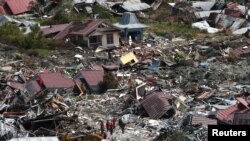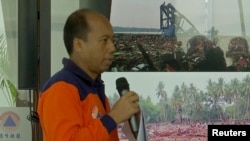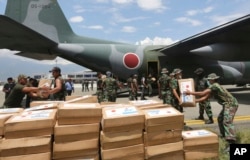Indonesian rescue workers will stop searching for the bodies of victims of an earthquake and tsunami on the island of Sulawesi on Thursday, the national disaster mitigation agency said Sunday.
The announcement came after the official death toll from the 7.5 magnitude quake and a tsunami it triggered Sept. 28 rose to 1,763.
Bodies are still being recovered, especially from ruins of buildings in the small city of Palu and from neighborhoods hit by liquefaction, a phenomenon that turns the ground into a roiling quagmire, in the south of city.
“Evacuation stops on October 11,” the national disaster mitigation agency spokesman Sutopo Purwo Nugroho told a news briefing, using an Indonesian word that applies to the search and retrieval of both living and dead people.
“Victims who have not been found are declared missing,” he said. Some limited searching might still be undertaken but large-scale searches with many personnel and heavy equipment would cease, he said.
Hundreds buried
Many hundreds of people are still buried in mud and debris in the south of Palu, where neighborhoods were obliterated by liquefaction and desperate relatives have been seeking help to find loved ones.
Dozens of rescuers removed 34 bodies from one place Saturday.
Nugroho said the debris would be removed from those places and they would be turned into public spaces like parks and sports venues.
“We don’t want the community to be relocated to such dangerous places,” he said.
Most of the dead have been found in Palu, the region’s main urban center. Figures for more remote areas, some just re-connected to the outside world by road, are trickling in.
Aid operation
Sulawesi is one of Indonesia’s five main islands and, like the others, is exposed to frequent earthquakes and tsunamis.
In 2004, a quake off Sumatra island triggered a tsunami across the Indian Ocean that killed 226,000 people in 13 countries, including more than 120,000 in Indonesia.
A big aid operation is gearing up to help hard-hit communities where some 70,000 people have been displaced.
Indonesia has often been reluctant to be seen as relying on outside help to cope with disasters.
The government shunned foreign aid this year when earthquakes struck the island of Lombok but it accepted help from abroad for Sulawesi.
The government says it particularly needs aircraft, generators, tents, water treatment and field medical facilities.














